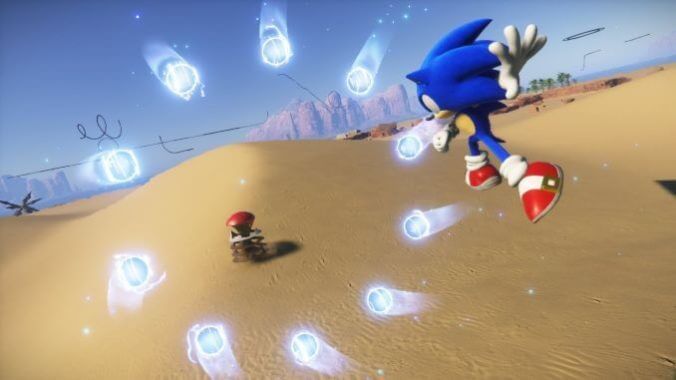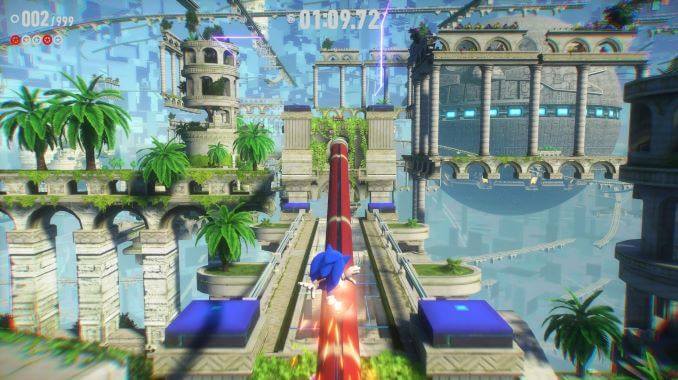Sonic Frontiers Gets Lost Before It Ever Finds Its Way

Sonic Frontiers is the most frustrating kind of game. Not because it’s bad; actually, I’m surprised (and relieved) to say it’s a largely solid game when everything’s working. But it’s also confoundingly inconsistent and slapdash. Poorly optimized, bloated open worlds and confusing menus and tutorials clash with good platforming, great music and clever level and encounter design to deliver one of the weirdest games I’ve ever played. Sonic fans should rest easy, though, as it seems like Frontiers is shaping up to be what many of them have wanted for years. That said, I’m not a Sonic fan.
At first glance, an open-world game sounds like a concerning step for the Sonic franchise. In a series whose buggy, glitch-ridden 3D legacy could (generously) be defined as shaky at best, creating more margin for error doesn’t seem like the best way to find a new direction for the series. Beyond Sonic’s history, open-world games, especially ones that reimagine classic franchises, are a tossup. Chasing 2017’s The Legend of Zelda: Breath of the Wild’s lasting financial and critical success is undoubtedly an appealing business venture, but most of these games end up feeling like formulaic, hollow regurgitations of Breath of the Wild’s best innovations and ideas.
Looking a bit deeper, though, it’s clear that the Sonic franchise needs more freedom to realize its core ethos. It always has. From its inception, Sonic’s always been about going fast, but the series’ branching levels made speed a reward for mastery and discovery, rather than just haphazardly rushing from zone to zone. It’s something that a surprising number of Sonic games have misunderstood over the years, opting to put players in more rigid segments of gameplay that feel like quick-time events with paths appearing at stops in the mashing and rail-grinding. By busting these platforming environments wide open, Frontiers injects much-needed new life into the series. Sadly, that newfound flame doesn’t burn quite as bright by Frontiers’ end as it did in the beginning hours.
Frontiers’ open, freeing structure lets you explore at your own speed in your own way. In doing so, you’re sure to fall into Frontiers’ trap. Maybe you’ll happen upon an interesting-looking marker or boss, or perhaps you’ll spot one of the challenges used to unlock parts of a map on the horizon. You might even find one of the game’s fishing spots! Initially, each individual distraction has a way of pulling you from one puzzle or mini platforming challenge to the next. It feels so natural and enticing that I completed 90% of Frontiers’ first level completely naturally. Sure, it’s a trick employed by nearly every open-world game to date, but Frontiers actually genuinely benefits from being an open world game. That’s thanks in no small part to the varying types of challenges and distractions Frontiers throws at you.
Imagine if a child took a massive toy box full of pieces of different Sonic levels—stuff like rails, springs, and platforms—and scattered them across the horizon of a massive landscape. Now imagine each piece actually fit together to make mini platforming challenges that don’t just intersect remarkably well, but also reward players with collectibles, new vantage points, shortcuts or boss fights.
Those smaller platforming sections make up a big portion of the game’s appeal. They even make Sonic’s trademark speed work much better than it has in a long time; in most Sonic games, error is met with a game over, or sending you back to a checkpoint. In Frontiers, messing up might require you to restart the challenge, but more often than not, you’ll be greeted with something new on the ground and an opportunity to take the challenge on again.

-

-

-

-

-

-

-

-

-

-

-

-

-

-

-

-

-

-

-

-

-

-

-

-

-

-

-

-

-

-

-

-

-

-

-

-

-

-

-

-








































